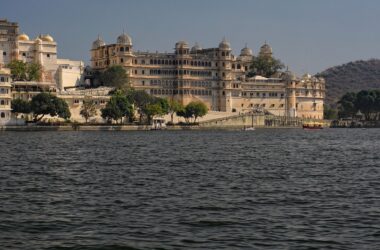Erode district is located in the extreme north of Tamil Nadu. It is mostly surrounded by the state of Karnataka and the Palar River also covers a long distance. To the east are Namakkal and Karur districts. Dindigal district is its nearest neighbor to the south and has Coimbatore and Nilgiris districts as its border in the west. Thus the Erode district is essentially a landlocked region with no maritime cost of its own. Erode district is situated between 10 36″ and 11 58″ North latitude and 76 49″ and 77 58″ East longitude. Turmeric City of India
The area included in the district can be characterized as a long undulating plain with a gradual slope towards the Kaveri river in the southeast. The Bhavani and Noyyal, two major tributaries of the Kaveri River, drain the long stretch of mountains to the north. A part of the eastern boundary of the district is formed by the Kaveri River, which enters the district from Salem and flows in a southerly direction.
How to Reach Erode
By Air:
The nearest local and international airports are Coimbatore Airport (90 Kms) and Tiruchirappalli Airport (140 Kms).
By Train :
Erode railway station (Station code – ED) comes under Salem Division of Southern Railway, connected with Chennai, Coimbatore, Tiruchirappalli, Madurai, Rameswaram, Ernakulam, Bengaluru, Thiruvananthapuram, Mangalore, Mumbai, New Delhi, Kolkata, etc.
By Road :
The major highways connecting Erode are Erode-Perundurai-Coimbatore (SH-96/NH-544), Erode-Gobichettipalayam-Satyamangalam (SH-15), Erode-Kodumudi-Karur (SH-84), Erode-Kangayam-Palani (SH-5). -84) are. – 83A), Erode-Bhawani-Metur (SH-20). Erode-Sankagiri-Salem (SH-79A/NH-544). Erode is well connected by mofussil bus services to all major towns and cities of Tamil Nadu and Karnataka
Government Museum, Erode
The Erode Government Museum will appeal to culture buffs and history buffs. The museum is a rich repository of objects related to art, anthropology, and archaeology, making it one of the largest repositories of art and culture in Tamil Nadu. The museum was established in 1987 and is also open on Sundays.
The Government Museum is the premier gallery showcasing regional art and traditions. Displaying inscriptions belonging to the Kongu Chola Empire, the museum was opened to the public in 1987. Some of the major attractions of the gallery are the artifacts, handicrafts, and stones of Bargur. In addition, there are separate sections for displaying Tanjore paintings, manuscripts, and other pre-history items.
In addition, the museum is known for housing an extensive collection of palm-leaf manuscripts as well as botanical and zoological specimens.
Birds Sanctuary, Vellode
The Bird Sanctuary, Vellode is about 15 km from Erode. It is on a large lake surrounded by semi-dark bushes near Vellode. This .772 km (0.298 sq mi) sanctuary is home to many exotic birds. There are thousands of birds coming from different countries in the sanctuary, some of which are easily recognizable. Some easily found bird species include cormorants, teals, pintail ducks, pelicans, and darters.
Kodumudi
It is 40 km from Erode and 105 km from Coimbatore. The special feature of this city is the temple of Lord Shiva called Muchukundeshwara, Lord Vishnu called Veera Narayana Perumal and Brahma called Trimurti, established in the same temple complex. It is one of the important temples of the district. The 10-day Chithirai Utsavam [April-May] and Panguni Uthiram [March-April] are the most important festivals of the temple. Turmeric and sugarcane are the main crops of this village. Rice mills and paper mills are also located here.
Bhavani
It is 15 km from Erode and is also known as Kuduthurai among the local people. The Bhavani River, spread over a distance of more than 200 km, gets its water mostly from the southwest monsoon and also through help from the northeast monsoon. It originates in the Silent Valley of Kerala, crosses other districts and towns, and flows through this city. Bhavani Sangameshwar Temple is an ancient temple at the confluence of the rivers Kaveri, Amrit Nathi, and the invisible Agaya Gangai. It is also known as Triveni of the South.
Kodiveri Dam
It is 60 km from Coimbatore, 12 km from Gopichettipalayam, and close to Sathyamangalam. It was built by the Mysore Maharaja in the 17th century. It has two channels called “Arakkan Kottai Channel” and “Thadapalli Channel”.
Bannari
300 years ago, it was known as Dhandanayakkan Forest and is now popularly known as “Bannari”. The temple of Bannari Mariamman situated here is 14 km from Sathyamangalam. Elephants, wild boars, bears, deer, rabbits, monkeys, and peacocks are found in the nearby forest area. Special buses run from Sathyamangalam and Coimbatore on festival days and holidays.
Pariyur
It is 3 km away from Gopichettipalayam. Kondathu Kaliamman Temple, Amrapaneeswara Temple dedicated to Lord Shiva and Adinarayanasamy Temple dedicated to Lord Vishnu are the important temples of this city.








